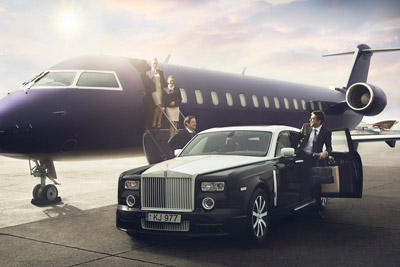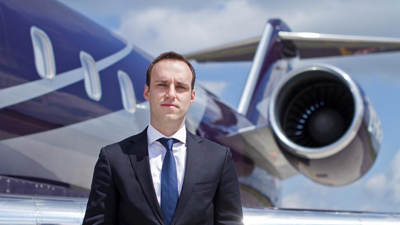 Recently, McDonalds has announced its plans to open a high-end restaurant in Japan aiming to capitalize on the vast demand for luxurious products in Asian markets. Reportedly, locals now spend more than 50 billion Euros a year on luxury services and more than half of them feel it is important to openly demonstrate the luxury items they can afford. As the wealthy population from the Middle East, Latin America, the CIS and other emerging regions are joining Asia in this hunt for luxury goods, private jet operators, among others, find themselves in need of shaping their services according to the different notions of “luxury”.
Recently, McDonalds has announced its plans to open a high-end restaurant in Japan aiming to capitalize on the vast demand for luxurious products in Asian markets. Reportedly, locals now spend more than 50 billion Euros a year on luxury services and more than half of them feel it is important to openly demonstrate the luxury items they can afford. As the wealthy population from the Middle East, Latin America, the CIS and other emerging regions are joining Asia in this hunt for luxury goods, private jet operators, among others, find themselves in need of shaping their services according to the different notions of “luxury”.
According to Bain & Co., in the past 15 years the overall number of luxury consumers worldwide has more than doubled from 140 million to over 350 million. Moreover, in 2014 alone, the global market of personal luxury goods generated $251 billion in revenue.
Meanwhile, the process of engaging a luxury consumer is constantly evolving. As the number of billionaires in the US is now lower than the one in China, the Middle East and Russia combined, more and more luxury goods and services are tailored around the diverse cultural, religious and personal preferences.
“Luxury is defined as a condition or situation of great comfort, ease and wealth. Needless to say, the only universal notion in the definition is wealth. The other two are strictly  dependent on the personal preferences and we opt to tailor our services around the individuals we serve,” says Vitalij Kapitonov, the CEO of KlasJet. “For instance, while the Chinese perception of luxury is strongly influenced by tradition, the understanding of customers from the ME countries is largely shaped around religion. Regardless of whether a luxury good or service is acquired in London or Dubai, 71 percent of all purchase-related decisions made by the Gulf consumers are influenced by religion. That is almost twice as much compared to the global average of 32 percent. That is why, during the holy month, for instance, we offer specific on-board catering.”
dependent on the personal preferences and we opt to tailor our services around the individuals we serve,” says Vitalij Kapitonov, the CEO of KlasJet. “For instance, while the Chinese perception of luxury is strongly influenced by tradition, the understanding of customers from the ME countries is largely shaped around religion. Regardless of whether a luxury good or service is acquired in London or Dubai, 71 percent of all purchase-related decisions made by the Gulf consumers are influenced by religion. That is almost twice as much compared to the global average of 32 percent. That is why, during the holy month, for instance, we offer specific on-board catering.”
Nonetheless, as the booming economies in China and the Middle East are approaching maturity, the need to show-off wealth through demonstrating the ability to afford luxurious branded goods is slowly giving up its high place on the list of priorities. While some believe that $300 million diamond-filled jets are the face of bizav in the Gulf region – it is actually not the case. According to the Middle East Business Aviation Association (MEBAA), 70% of all jets in the region are used for business purposes and just 30% are designed specifically for luxury and high-net worth individuals.
In the meantime, geographical location is not the only factor which determines the understanding of what constitutes luxury nowadays. According to industry experts, the notion is also highly dependent on the generational affiliation. For instance, the widely discussed millennials associate high-end products with the so-called notion of “functional luxury”, which stands for tangible quality, craftsmanship and authenticity rather than the perceptual brand attributes alone.
“In the words of a billionaire flyer, private jet operators nowadays can’t lie back, rely on their brand and fail to deliver the best service. When it comes to the wealthy, in terms of service, the expectations are so high that one cannot afford to slack. As the perception of luxury differs not only among regions but also across distinct age groups, only those companies which possess deep knowledge and the ability to offer tailor-made services will have the upper hand in the highly competitive bizav market of today,” concludes Vitalij Kapitonov, the CEO of KlasJet.





